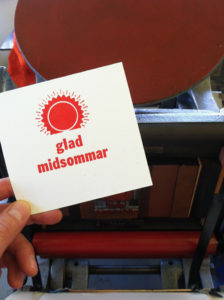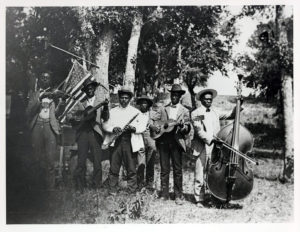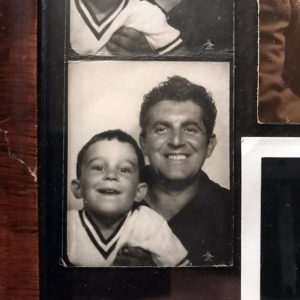No matter what we humans do through our policies and laws and actions to each other and to our planet, still that planet keeps to its tilted-axis spinning and keeps its course around the sun. Yesterday morning at 6:07 Lake Worth time, which is currently Eastern Daylight Time, we reached the point where that tilt translated to the greatest amount of sunlight for the Northern Hemisphere. Longest day of the year, longest amount of sunlight: the Summer Solstice. It was the opposite situation in the Southern Hemisphere, which experienced its longest night. This vast celestial clockwork of tilted planet orbiting its star amongst the billions of heavenly bodies orbiting other heavenly bodies: this is what creates our seasons and our understanding of life as we know it on our small planet. Our lengthening and shortening days a manifest distillation of all the mechanics of the universe.
Bringing things back home, we find ourselves at an auspicious juncture of the year. Although we don’t do much here in the States to celebrate the Summer Solstice (we are not, by and large, a very celebratory people), in other places these are very important days, especially in Europe, and especially in Scandinavia, which is no wonder: there are places near the Arctic Circle that are bathed these days in almost continuous sunlight. The Church early on understood the significance of these days and their rich symbolism, and so the birth of John the Baptist was assigned to the Summer Solstice and the birth of Christ was assigned to the Winter Solstice. No one knows for sure when exactly these two historical figures were born, but placing the birth of Christ at the Winter Solstice is potent symbolism for the darkest nights of the year (a light in the darkness) and placing the birth of the prophet who would pave the way for that light at the Summer Solstice reaffirms that symbolism. Both events occur just a few days after their respective solstices, and here now comes St. John’s Day on the 24th of June, with a celebration that begins with St. John’s Eve on the 23rd. It is the mirror in the wheel of the year to Christmas. And just as the magic that accompanies Christmas is focused primarily on its Eve, so the same with St. John’s Day. It is long considered in popular folklore a portal night, a night when the pathways between worlds is most permeable. It is the night of William Shakespeare’s comedy A Midsummer Night’s Dream, for this, by traditional reckoning of time, is Old Midsummer, just as Christmas comes at Old Midwinter, for although the solstices bring the start of summer and winter by the almanac, our ancestors in their particular wisdom saw light increasing each day until the Summer Solstice and then decreasing afterward, as it does. To them, the solstice was the height of summer, and so they called it as they saw it: Midsummer. We are on the downward side of the solstice from here on out. Each day a little bit of sunlight will be shaved off our daily tally… by the equinox three months from now day and night will be balanced; three months later at the solstice of Midwinter, we will experience our darkest night. I contemplate all these things and find beauty in the symbolism as well as in the logic.
As for the portals: our mostly logical 21st century minds don’t subscribe much to magic, but magic can take many forms and can mean different things to different people. If you want to think of magic in terms of calling down joy to your life, in transforming the events of each day into positivity through an open and giving attitude, well, I am all for that magic. This is a powerful alchemy, a magic we all have access to. There are places, though, where folks insist they run into magic of a more ethereal kind, still today in this logical world we live in. Those in Ireland and Britain have their faeries; the Icelanders have their Huldufólk; the Finns, who are so prominent here, have their Haltijas. I feel as if I’ve caught some glimpses of this particular kind of magic in my day, perhaps through the view that is available through a sideways glance, which maybe is one available portal. And if a night like St. John’s Eve can make those portals more open, well, again… I am all for bridges and understanding. I’ve been on a mission these days to read books in my bookcase that I bought over the years and never opened, and one I am reading right now is about parallel universes. The book was printed in 1988 and so a lot has progressed since then in the realm of quantum physics, but as I read each chapter I am reminded of how vast and truly bizarre our universe is. At this point, I am pretty much open to anything.
Image: “Glad Midsommar” is Swedish for “Happy Midsummer.” That’s a card I designed and printed letterpress for some midsummer event or other. Nearby to us this St. John’s Eve we’ve our choice of a midsummer bonfire at the Finnish American Club west of town or a Midsommar celebration and Smörgåsbord at the Swedish coffee house in neighboring West Palm Beach. I’ll have spent the afternoon teaching the first of two Book Arts 101: Midsummer Night’s Dream workshops at the Jaffe Center for Book Arts, so I will, most likely, be beat, and Seth will probably light a fire in the copper fire bowl in the backyard and we’ll sit there shirtless in the summer heat, with a glass of something, watching the flames as they illuminate the brief and breezy Atlantic night. And that’s not so bad, is it? Seats are still available in the workshops, by the way. You should join me.


